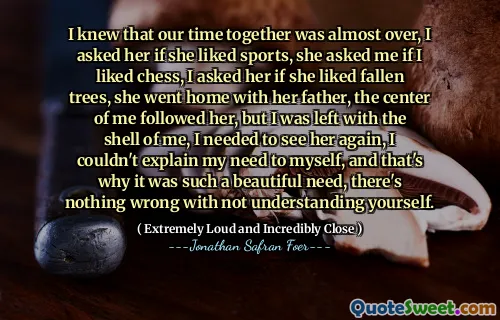What do you think is going on?' 'I feel too much. That's what's going on.' 'Do you think one can feel too much? Or just feel in the wrong ways?' 'My insides don't match up with my outsides.' 'Do anyone's insides and outsides match up?' 'I don't know. I'm only me.' 'Maybe that's what a person's personality is: the difference between the inside and outside.
In this exchange, there is a deep exploration of the disconnection experienced between internal feelings and external expressions. One character expresses a sense of overwhelming emotion, suggesting that feeling intensely can be burdensome. The dialogue highlights a struggle with authenticity, questioning whether anyone's true self aligns with how they present themselves to the world. This reflects a universal theme of emotional complexity and the human experience of masking one's true feelings.
The conversation indicates that a person’s identity might be rooted in the disparity between their inner life and outward behavior. It implies that this incongruity can shape personality, suggesting that understanding oneself involves acknowledging these differences. Ultimately, it raises questions about self-perception and the nature of emotional expression, prompting readers to reflect on their own internal and external realities.






